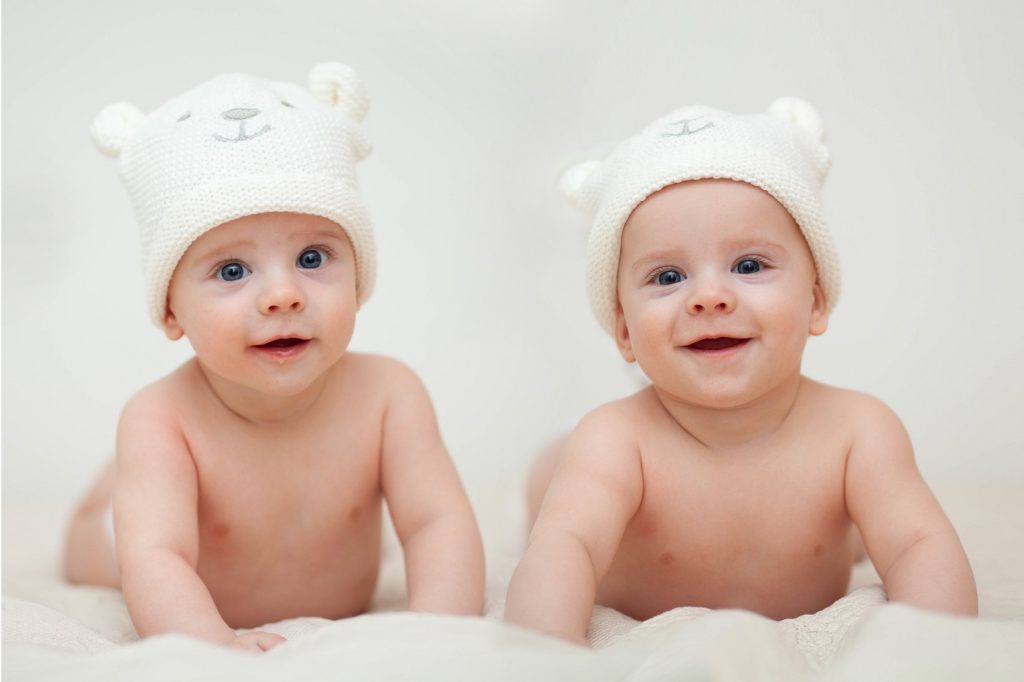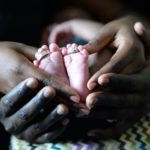The following is a personal story shared by Mariana and Alfredo, adoptive parents living in South America who participate in CanaVox reading groups. One of the seven core values that unites CanaVox participants is the conviction that family kinship bonds between children, parents, grandparents, and extended family should be protected and preserved. However, sometimes a child loses one or more parents due to tragic circumstances. CanaVox admires adoptive and foster parents who seek to remedy broken kinship bonds and open their homes to these children with generosity and care, hoping to give the child a second chance at a loving family experience without deliberately seeking to erase or dismiss the child’s biological history.
Mariana and Alfredo’s story can help us to understand some of the unique struggles that adoptive families face, as well as the beauty of the deep bonds that they share.
As parents who have adopted children, we have had to confront bias against children who are adopted and heard insinuations that parents who adopt are not the true parents. These sentiments have forced us to reflect more deeply about the contribution of adoptive parents, the sources of a child’s identity, and our family type.
In order to help shed light on our conviction that parents who adopt are real parents and that our children’s identity is shaped by us in a fundamental way, we would like to share the story of how we adopted our children.
Start your day with Public Discourse
Sign up and get our daily essays sent straight to your inbox.Coming to Terms with Infertility
When we were dating, I (Mariana) was afraid to tell Alfredo about certain health issues I had. I don’t ovulate regularly, and doctors had told me it would be hard for me to conceive naturally. I was in love with Alfredo, and the relationship was getting serious, so I sensed it was time to tell him. It was difficult, because he came from a large family of twelve, and I didn’t want to spoil his dreams of a large family of his own. But knowing that I had to, I sat him down one day and explained the matter slowly. He listened thoughtfully and responded that he wasn’t in the least upset by it. He was a huge fan of adoption. In fact, one of his older sisters had been adopted long before he had been born, so the idea of building a family this way came very naturally to him. His response gave me great comfort, relief, and hope. During our courtship, then, we had already decided to consider adoption.
After our wedding, though, I still hoped to conceive naturally. Like so many women, I wanted to try, just in case. But after two years, the reality of my infertility began to impose itself. It was hard for me to accept, because it seemed all of my girlfriends were getting pregnant or having babies just then. For his part, Alfredo was ready to adopt. He loved children and had been ready to adopt since the time we were married, but he realized I wasn’t ready and waited patiently. In theory, we had already made the decision to adopt, but my heart needed time to mourn and let go of natural childbirth so as to open itself fully to adoption.
One day, a friend called me to tell me she was pregnant. While listening, my heart leapt and said: “Now’s the time! Go!” Shortly afterwards, Alfredo and I filled out adoption papers. That moment had enormous significance for us. From then on, we felt pregnant. It was a kind of spiritual pregnancy. We were parents-in-waiting.
Early Adoption Fears
Like so many other expectant parents, we were nervous. First, we were nervous about the bureaucracy—the long, disorganized, time-consuming and often callous process of adoption in our country, which promised to be an emotional roller coaster.
Second, we were nervous about adopting a child who might have physical or mental health disabilities. Without any experience caring for babies, we thought it would be especially difficult to adopt a child with special needs. So, we asked for a healthy baby. With time, however, we realized that every child is a box of surprises, whether adopted or not. It’s useless to worry or try to anticipate one’s parenting future. Being a parent is always a challenge full of the unexpected, no matter how the child comes into the family. For that reason, it is better to approach parenting with a generous heart, ready to accept whatever challenges come our way. After the first adoption, we did not make requests regarding our children’s health.
Being a parent is always a challenge full of the unexpected, no matter how the child comes into the family. For that reason, it is better to approach parenting with a generous heart, ready to accept whatever challenges come our way.
Our third fear was of adopting a child with a very different physical appearance from us. We wondered if it would be hard to bond with a child of a different race, who looked different. However, again, we realized with time that this worry was utterly unfounded.
We waited and prayed, and went through many emotions for two years. And one day, now fifteen years ago, out of the blue, I got a phone call about a four-month-old baby. Could we receive him the very next day at our house? Gulp! My heart jumped into my throat: YES!
The First Adoption
The next twelve hours were rushed and sleepless, as if labor and delivery had begun! Early the next morning we went to the adoption offices to sign the papers, and then straight to the foster parents’ home. On the way there, we started to call family and friends with the news. Emotions began to crescendo with every mile. When we arrived, we sat in the car for a few minutes absorbing the magnitude of what was about to happen. On the one hand, it was strange to receive our child in this way, from the home of strangers. On the other hand, it was a moment of sublime importance for our family, a divine moment.
When we walked in, there was the crib. Alfredo went first. The baby was lying on his back staring aimlessly when his eyes met Alfredo’s, and Santiago beamed his first smile. It was enormously moving. Alfredo cooed and gushed at his son spontaneously. Then, I leaned over and took hold of that gorgeous ball of pudginess in my arms. I felt as if my chest was going to explode. I don’t know what it is like to meet your biological child for the first time, but the beauty of meeting the child you’ve adopted is indescribable—the joy of finally holding that child you’ve longed for and waited for for so long!
Many came to visit: grandmothers and grandfathers, aunts, uncles, and friends. They all brought gifts, which were enormously helpful, because we had nothing ready, since the adoption happened so fast. I left my job to mother my new baby full-time. He was a very easy baby to care for. The foster parents had done a superb job, and we bonded easily. We felt Santiago had been created specifically for us. As he grew, we learned about his personality, sense of humor, and preferences. Like any parents, we got to know him slowly and bonded more deeply as time passed.
After a few years, we were ready to adopt again. Santi was a balanced, happy child, and he was begging for siblings. One time, we were walking down the street when a man gave us a flyer advertising the circus that just came to town. The flyer said: “Children under two: Free.” Santi pointed to the paper with excitement and said, “Mommy! They’re giving children away for free here!”
The Second Adoption
This time, Alfredo and I decided to cast the net wider. We let the agency know we were open to older children, two or three siblings, and even children with special needs. We hoped to reduce our wait time, but we still had to wait four years. Just when we thought it would never happen, we received a phone call about two-year-old twin boys—Antonio and Felipe—who’d been living in a hospital but now were ready for adoption.
The boys had had a difficult first year. They had suffered malnutrition, and Antonio needed oxygen for his little lungs. We were asked to visit the hospital every day for two weeks so the boys could become accustomed to us and so we could learn about their care. This process was emotionally challenging. We wanted to bring them home right away to begin bonding, but we knew we needed to give them time to adjust.
When we were finally able to bring them home, once again the whole caravan of extended family came to meet and greet. Since the twins were older and rambunctious, they were very entertaining for the whole family to watch. They wanted to see and touch everything! Santiago was a little shocked by the transition. He had wanted siblings very dearly, but these guys were little hurricanes who demanded every bit of their parents’ attention. I remember laughing one hard day when I saw a sign Santiago had pasted to his door: “TWINS PROHIBITED.”
Although the second adoption was more challenging because of the age of the boys, their number, and their special needs, with time we adjusted and bonded very strongly to one another. Today we are all certain we were created specifically for each other by some mysterious eternal design.
How We Talk to Them about Their Adoption and Their Identity
Many people have asked us how we speak to them about their adoption. When the boys were around five years of age, they came to us with questions about their origins. From the beginning, we have always told them the truth, like a bedtime story: “Five years ago, in the country of X, you were created in the womb of your biological mother. We are so, so very grateful to her, because she took care of you in her tummy. You were born in a hospital, and then some foster parents took good care of you and loved you those early months with all their hearts. All this time your mom and I were working very hard to find you, . . . like a game of hide and seek!” We show them photos and documents of their early years—photos of the families, nurses, and even the judges who facilitated the adoption.
We have always told our children the truth, like a bedtime story: “Five years ago, you were created in the womb of your biological mother. . . . All this time your mom and I were working very hard to find you, . . . like a game of hide and seek!
Of course, this doesn’t satisfy all of their questions. Santiago is the most curious about his biological origins. One time, when he was about ten years old, we were on vacation in another country. As he observed the beach full of people, he asked: “Could it be that the woman who carried me in her tummy might live around here?” It seems to be often on his mind. Now fifteen, he still wonders about his biological mother and why she was unable to keep him. Sometimes he asks if he might have siblings, or whether his biological father might have abandoned his mother. We always explain to him that we don’t know exactly what may have happened, but we must learn to have compassion and forgive, because we don’t know what tremendous challenges they faced at the time that forced them to make such a hard decision.
Still, when he grows up, he says he wants to find his biological family, which I think may help him develop a more complete picture of his identity. To me, as his mother, it is difficult to grapple with this desire of his. I am not all that eager for him to find them, although I know his love for us would in no way be in danger. Alfredo doesn’t mind Santiago looking for his biological parents, but it does generate sadness for me, because I wish I had been able to carry him in my own body and known him from day one.
The twins are far less concerned about their biological origins. They are more sanguine temperamentally, and they have each other for biological support. They see adoption as a normal part of life. One day I smiled as Felipe asked a little cousin of his, “James, were you born from your mommy’s tummy or from some other woman’s?”
Adoptive Parents Are Real Parents
Some people don’t consider adoptive parents to be the “real” parents. While it is undeniable that biological parents give their children their genetic composition, the parents who raise them leave an enormous mark on other fundamental aspects. After all, our identity is not merely our biological constitution. It’s also composed of our character and spiritual makeup, which is informed by our education, the habits we develop, the affections we form, our beliefs and values, all built over many years in the ways we react to our environment, much of which happens under the guidance of our parents. In this way, adoptive parents become indispensable to the identity of the child.
It’s remarkable how the boys have taken on so many of our family’s traits. Santiago has picked up many of Alfredo’s mannerisms, from his facial expressions to his manners of speech to the kinds of reactions he has to events. Even his gait is similar. They have similar loves and hobbies, such as cinema, video games, and dogs, which Alfredo and I love.
On a deeper level, we are raising them as Christians. We emphasize the importance of good manners and generosity towards all. We select activities for them to build character, and we guide them in the follow-through. I work hard to model proper behavior towards men, and to teach them about the differences between boys and girls, men and women. No one can deny that these contributions develop their understanding of their place in the world and identity.
That’s why I dislike it when I hear people say that we have “adopted children,” as if the adoption is a necessary caveat to the relationship. In Latin America, it is common to discriminate and tease adopted children by putting labels on them and reducing their identity to being “adopted,” as if that were the core of who they are. But the adoption is merely a circumstance of their lives.
In our family, we have mutually adopted each other. Our children have adopted us as their parents, and we have adopted them as our children in a kind of spiritual fusion that defies explanation. We are enormously grateful to their biological parents—for having made this possible by giving them the gift of life—and to all those who helped us to become one united family.














